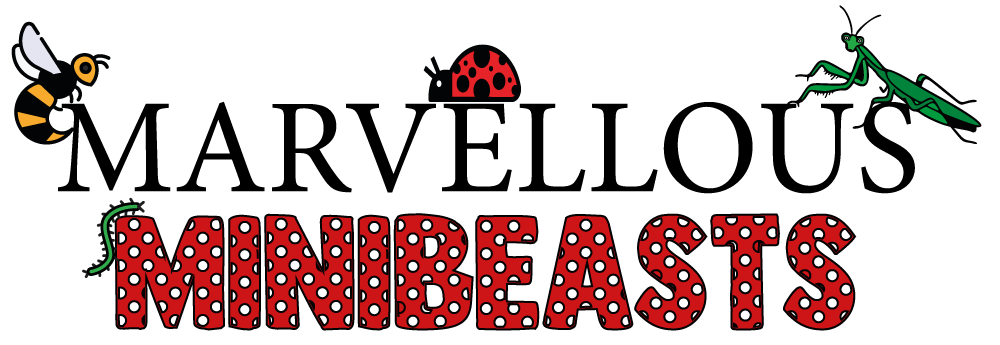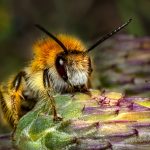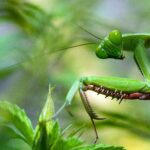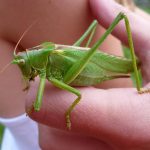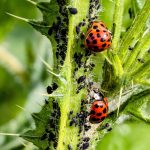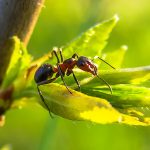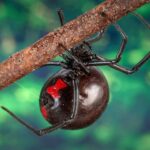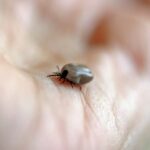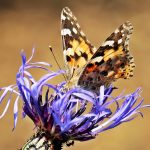Insects are a fascinating and diverse group of animals that make up the largest class of living organisms on Earth. With over 1 million known species, they can be found in almost every habitat on the planet, from deserts to rainforests to the depths of the ocean. In this comprehensive guide, we’ll cover everything you need to know about insects, including their anatomy, behaviour, ecology, and diversity.
What Are Insects?

Insects belong to the class Insecta, which is part of the phylum Arthropoda. They are characterised by their three-part body plan (head, thorax, and abdomen), six legs, and two pairs of wings (in most species). Insects have a hard outer covering called an exoskeleton, which protects their soft internal organs and provides support for their muscles.
Insects are incredibly diverse, with a wide range of sizes, shapes, and colours. Some are less than 1 mm long, while others can grow to over 30 cm. Some insects are brightly coloured or patterned, while others are camouflaged to blend in with their surroundings.
Entomology
Entomology is the scientific study of insects and their relationships with humans, animals, plants, and the environment. It involves the study of insect biology, behaviour, ecology, genetics, and evolution, as well as their roles as pests, vectors of disease, and important members of ecosystems.
Entomologists use a variety of techniques, including field observations, laboratory experiments, and molecular analyses, to understand the complex interactions between insects and the world around them.

What is the importance of identifying and classifying insects? click here to find out.
Insect Anatomy

Giant water bug credit: Frank Vassen
To understand insects, it’s important to know their anatomy. In this section, we’ll take a closer look at the external and internal anatomy of insects, including their body segments, appendages, and sensory organs.
External Anatomy

The external anatomy of insects is divided into three main parts: the head, thorax, and abdomen.
The head of an insect contains its eyes, antennae, and mouthparts. Insects have two types of eyes: compound eyes, which are made up of many small lenses and can detect movement and colour, and simple eyes (ocelli), which can detect light and dark.
The antennae of insects are used for sensory perception, and can detect touch, taste, and smell. The mouthparts of insects vary depending on their feeding habits. Some insects have chewing mouthparts, while others have piercing-sucking mouthparts.
The thorax of an insect is where its legs and wings are attached. Insects have three pairs of legs, which are used for walking, jumping, and other forms of locomotion. The wings of insects are used for flight, and can be either membranous or hardened.
The abdomen of an insect contains its digestive, reproductive, and respiratory systems. It also houses the insect’s excretory organs.
Internal Anatomy

The internal anatomy of insects is also divided into three main parts: the digestive system, the circulatory system, and the nervous system.
The digestive system of insects includes the mouthparts, salivary glands, crop, stomach, and intestine. Insects have a complete digestive system, meaning that they have a separate mouth and anus.
The circulatory system of insects is an open system, meaning that the blood (hemolymph) is not contained within blood vessels. Instead, the hemolymph bathes the internal organs directly. Insects have a heart-like structure called a dorsal vessel, which pumps the hemolymph through the body.
The nervous system of insects includes a brain, which is located in the head, and a ventral nerve cord, which runs along the underside of the body. Insects have specialised sense organs, including eyes, antennae, and sensory hairs, which allow them to detect their environment.
What is an insect? click here to find out more.
Insect Behaviour
Insects exhibit a wide range of behaviours, from simple reflexes to complex social interactions. In this section, we’ll explore some of the most interesting and unusual behaviours exhibited by insects, including communication, mating, and defence mechanisms.

Communication
Insects communicate with each other using a variety of methods, including visual cues, sound, touch, and chemical signals. Some insects use visual cues to attract mates or repel predators, such as the bright colours of butterfly wings or the warning patterns of a ladybird.
Others use sound to communicate, such as the chirping of crickets or the buzzing of bees. Many insects use chemical signals, called pheromones, to communicate with others of their species, often for mating or territorial purposes.
Mating
Insects exhibit a wide variety of mating behaviours, ranging from simple encounters to complex courtship rituals. Some insects mate only once in their lifetime, while others mate multiple times. Some insects use pheromones to attract mates, while others engage in elaborate courtship dances or displays to woo their partners.
Defence Mechanisms
Insects have a variety of defense mechanisms to protect themselves from predators. Some insects, such as ladybirds, have bright colours or patterns to warn predators of their toxicity. Others, such as walking sticks, blend in with their environment to avoid detection. Some insects have spines or barbs on their bodies to deter predators, while others release noxious chemicals or emit loud sounds to scare them off.
Insect Ecology

Insects play important roles in many ecological processes, including pollination, decomposition, and nutrient cycling. In this section, we’ll explore some of the ways that insects interact with their environment and other organisms.
Pollination
Many insects, including bees, butterflies, and moths, are important pollinators for plants. Pollinators help plants reproduce by transferring pollen from the male reproductive organs to the female reproductive organs. This process is essential for the production of fruits, seeds, and nuts, and is vital for the survival of many plant species.
Decomposition
Insects are also important decomposers, helping to break down dead plant and animal material into nutrients that can be used by other organisms. Insects such as beetles, flies, and ants are particularly important in this role, as they can break down even tough materials like wood or bone.
Nutrient Cycling
Insects play a vital role in nutrient cycling, moving nutrients between different parts of the ecosystem. For example, dung beetles help break down animal waste, returning nutrients to the soil. Termites also play an important role in nutrient cycling, breaking down wood and other plant materials that would otherwise be inaccessible to other organisms.
Ever wondered “why do mosquitoes exist?” read more here.
Insect Diversity
With over 1 million known species, insects are the most diverse group of animals on Earth. In this section, we’ll explore some of the different types of insects and the unique features that make them special.

Beetles
Beetles are the largest group of insects, with over 400,000 known species. They are characterised by their hard exoskeleton and front wings, which are modified into hard protective covers for the hind wings. Beetles can be found in almost every habitat on Earth and play important roles in pollination, decomposition, and nutrient cycling.
Butterflies and Moths
Butterflies and moths are known for their beautiful wings and intricate patterns. They belong to the order Lepidoptera and are characterised by their scales, which give their wings their distinctive colours and patterns. Butterflies are typically active during the day, while moths are more active at night.
Ants, Bees, and Wasps
Ants, bees, and wasps belong to the order Hymenoptera and are known for their social behaviour. They live in large colonies and have complex social structures, with specialised roles for individuals within the colony. Ants are important decomposers and predators, while bees are important pollinators and producers of honey. Wasps are predators, feeding on other insects and spiders.
Flies
Flies belong to the order Diptera and are characterised by their single pair of wings. They are important pollinators and decomposers, but some species also feed on blood or act as disease vectors. Common species include houseflies, fruit flies, and mosquitoes.
Grasshoppers, Crickets, and Katydids
Grasshoppers, crickets, and katydids belong to the order Orthoptera and are known for their ability to jump or sing. They are important herbivores, feeding on plants and grasses, but some species are also predators. Their songs are produced by rubbing their wings or legs together, and are used to attract mates or establish territory.
Termites
Termites belong to the order Isoptera and are known for their ability to break down wood and other plant materials. They live in large colonies and have complex social structures, with specialised roles for individuals within the colony. Termites are important decomposers and play an important role in nutrient cycling.
Insect Conservation

Despite their importance in many ecological processes, insects are facing a number of threats, including habitat loss, climate change, and pesticide use. In this section, we’ll explore some of the ways that scientists and conservationists are working to protect insect populations.
Habitat Conservation
One of the most important ways to protect insect populations is to preserve their habitats. This includes protecting natural areas such as forests and wetlands, as well as creating and maintaining habitats in urban and suburban areas. Planting native plants and creating pollinator gardens can help support insect populations.

Pesticide Reduction
Pesticide use can have a significant impact on insect populations, killing not only pests but also beneficial insects such as pollinators and decomposers. Scientists and farmers are working to develop alternative pest control methods, such as biological control and integrated pest management, that are less harmful to insects and other wildlife.
Citizen Science
Citizen science projects, in which members of the public contribute to scientific research, can also help support insect conservation efforts. Projects such as the Great Sunflower Project and the Monarch Larva Monitoring Project help scientists gather data on insect populations and better understand their behaviour and habitat needs.
Final thoughts
Insects are a fascinating and diverse group of animals that play important roles in many ecological processes. From pollination to decomposition to nutrient cycling, insects are essential to the health and well-being of our planet. However, insect populations are facing a number of threats, and it is important that we take steps to protect and conserve these important creatures. By preserving habitats, reducing pesticide use, and participating in citizen science projects, we can all help to support insect populations and ensure a healthy and vibrant ecosystem for generations to come.
